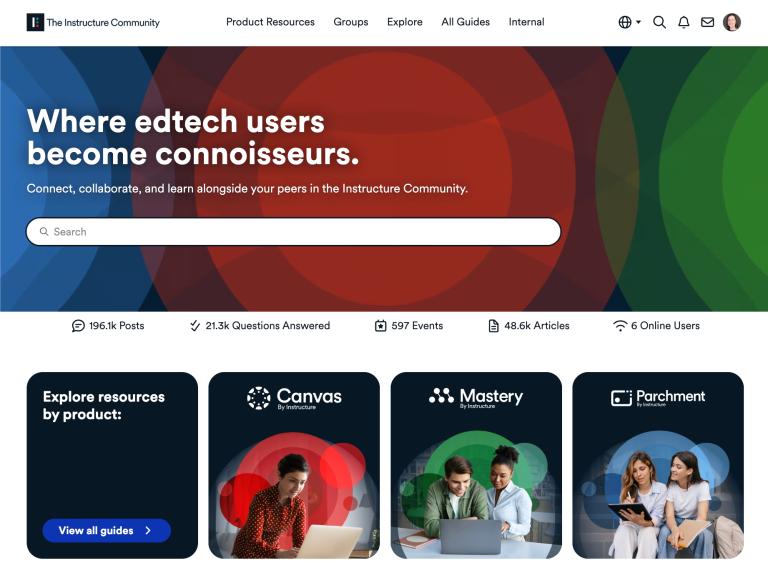For the last year and a half, schools across the nation have had to reckon with the logistics of learning continuity in a global pandemic. That has meant not only navigating complex public health and safety questions, but also adopting new technology at breakneck speeds.
School districts aren’t set up to tackle remote learning alone—thankfully, they don’t have to. In this blog, we’re taking a closer look at how the AWS Cloud and its EdTech partners are empowering K-12 educators and administrators during one of the most tumultuous moments in the history of education.
5 Ways the AWS Cloud Empowers K-12 Educators and Administrators
1. Alleviate the burden on IT staff: Virtually every industry is experiencing an IT staff shortage, and K-12 is no exception. A recent article from Forbes notes that the shift to remote work has resulted in a “tech talent war.” In an increasingly digital world, there simply aren’t enough skilled tech workers to go around. Because of the tech worker shortage, many districts rely on just one or two IT professionals to keep students connected.
With such a limited support staff, schools need technology to run as efficiently as possible—which is why many districts are turning to the AWS Cloud. When schools move to the cloud, IT professionals don’t need to worry about maintaining and updating on-premises infrastructure. The AWS Cloud is also flexible and scalable, so districts can flex to meet the ever-shifting needs of their students without burdening the IT team.
2. Log in from anywhere: As new variants emerge, it’s becoming increasingly clear that there will be no precise “end” to the Covid-19 pandemic. Since March 2020, schools have had to shift back and forth between in-person, hybrid, and remote learning to accommodate fluctuating local case counts. Because of this, administrators are looking beyond their initial quick fixes to more sustainable, flexible technology solutions that will ensure greater learning continuity.
One popular EdTech solution to support learning continuity is AWS End-User Compute, also known as desktop-as-a-service (DaaS). With DaaS, students can log in to their school accounts on any device, from anywhere in the world. DaaS makes your computer lab accessible from anywhere—which means that students can easily transition from home to school and back again, based on recommendations from public health officials.
3. Stay connected with the community: During the pandemic, administrative offices were inundated with calls from concerned students and parents looking for resources. The old systems simply weren’t sustainable anymore—which meant schools had to rethink how to stay in touch with their communities.
In response, some districts turned to the AWS Cloud. The Los Angeles Unified School District (LAUSD), for example, leveraged Amazon Connect to quickly build affordable, scalable call centers. LAUSD created one call center specifically for logistical information around Covid, and another for mental health support services for students. Amazon Connect allowed LAUSD to respond to community concerns quickly, efficiently, and at a low cost without overwhelming their administrative staff.
4. Expand access to educational resources: Even before the pandemic, schools struggled to get students access to educational apps in an equitable way. For example, many schools want to offer engineering courses, but only have a single computer lab students can use to access necessary applications. When the pandemic hit, that access became even more limited due to budgetary constraints and the fact that students were often logging in on Chromebooks or tablets with limited processing power.
To solve this problem, some districts began using Amazon AppStream. With AppStream, students can access complex applications through their browsers. They don’t need expensive hardware to log in—and schools pay based on hourly use, not costly licensing fees. AppStream not only improves access to applications at home but the platform also makes it easier for teachers to incorporate these apps into their curriculum without worrying whether they can reserve a computer lab.
5. Keep student information safe: Finally, the AWS Cloud supports districts’ cybersecurity efforts, which have become even more critical as students log in from unsecured home Wi-Fi networks. The AWS Cloud makes it easier to keep student information safe, with dozens of FERPA-compliant resources districts including secure databases, disaster recovery services, firewalls, and encryption. That means your students will be protected, whether your district uses AWS to run an entire remote school or simply store data.
Supporting Schools Through the Pandemic and Beyond
The global pandemic has highlighted how rapidly our world is changing, and how quickly schools need to be able to respond. During this period of transition, the AWS Cloud is here to support K-12 educators and administrators with secure, flexible solutions that support equity, access, and learning continuity. Even after the pandemic is over, these EdTech solutions will keep students connected, engaged, and inspired--no matter what the future holds.
Learn more about how the AWS Cloud can keep students connected in your district.
Related Content
 inst-3step.jpg
inst-3step.jpgBlogs
 13lmsfeaturesthatbenefitstudentlearning.jpg
13lmsfeaturesthatbenefitstudentlearning.jpgBlogs
 community-homepage.jpg
community-homepage.jpgBlogs
